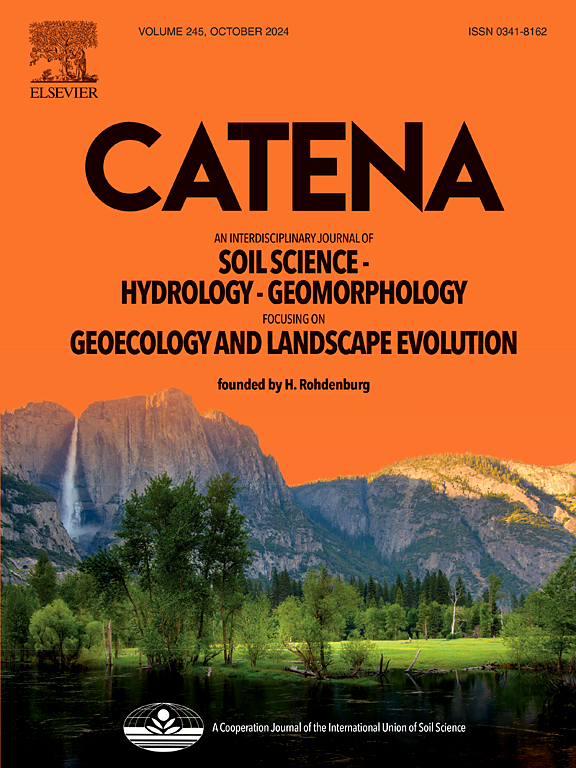Assessment of critical soil particle size characteristics in sediment transport process by quantifying the contributions of slope and flow discharge
Zhu, Qiming , Liu, June , Qi, Xiaoqian , Cheng, Xike , Zhou, Zhengchao
2025-03-01 null null 250(卷), null(期), (null页)
Sediment transport capacity (T-c) is a crucial parameter for understanding soil erosion and developing soil erosion models. Theoretically, an inflection point may emerge once the influence of soil particle size characteristics on T-c attains its utmost or least impact as slope (S) and flow discharge (Q) increase; however, few studies have explored the critical soil particle size characteristics that impact the mechanism of S or Q on T-c. In this study, T-c was analyzed for four soils (sandy loam, silty clay, silty loam, and silt) on the Loess Plateau at four Q (0.05, 0.07, 0.09, and 0.11 m(2) min(-1)) and five S (15.84 %, 21.26 %, 26.79 %, 32.49 %, and 38.39 %). The results revealed that silty clay exhibited the highest T-c. Both the S and Q significantly influenced T-c in all four soils (P < 0.01). S exerted a greater impact on T-c than Q for silty loam, whereas the opposite was observed for sandy loam, silty clay, and silt. Median particle size (D-50), sorting coefficient (sigma), and kurtosis (K-g) showed significant correlations with T-c (P < 0.01). The critical S and Q levels reversing the trend of the effect of D-50, sigma and K-g on T-c were determined as 26.79 % and 0.09 m(2) min(-1), respectively. Critical values of 26.72 mu m, 1.33 Phi, and 1.26 Phi were identified as the thresholds for D-50, sigma, and K-g, respectively, reversing the trend of the contribution of S and Q to T-c. These findings contribute to the theoretical understanding of sediment transport on the Loess Plateau.
相关推荐
- The role of biological soil crusts in vascular plant recruitment in the Loess Plateau region, China [2025-03-01]
- Ecological effect of the plantation of Sabina vulgaris in the Mu Us Sandy Land, China [2025-03-01]
- Effects of vegetation type and topography on vegetation restoration after pipeline construction in the Northern Shaanxi Loess Plateau, China [2025-03-01]
- The role of roots traits of climax community species to shear strength in the Loess Hilly Region, China [2025-03-01]
- Vertical distribution and migration of plutonium in the Loess Plateau, North Shaanxi, China [2025-03-01]



